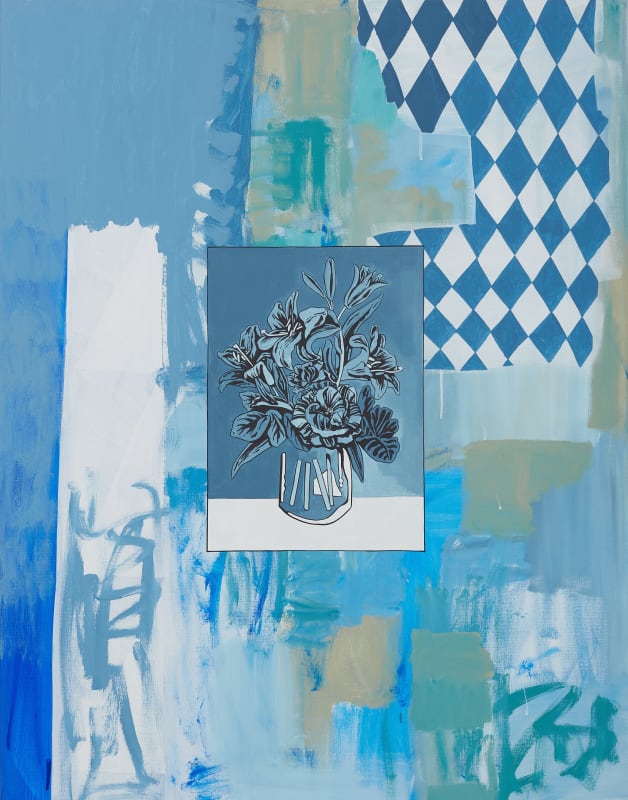The still-life paintings that feature in the Vase series come from another series of Baroque-style still-life work that I produced between 2016 and 2017. After I finished my second solo exhibition 'The Grave of Books' at the OCI Museum of Art, I wanted to step away from images that were filled with stories. In the classical still-life, most of the images symbolized something or other, and I wanted to paint only flowers, without other objects there. But rather than emphasizing the beautiful colors and curves of the flowers, I wanted my images to tamp down the conventionally employed 'flower elements'. I ended up basing my flower paintings on the Dutch still-life, which emphasized death over life. Looking back on it now, I could say that the still-life paintings I used were a form of abstract art to me—since I was focusing my representation on the linear elements and forms of the flower rather than its meaning. The backgrounds of my 'Vase' series feature recurring images of simplified landscapes with strong colors. Here, I used my previous still-life paintings as a kind of pictorial device on top of a simplified landscape.
The series 'Overture' focuses on images of disaster. Instead of something serious and frightening, I wanted to create images that were light yet not light at the same time—familiar, but with a sense of distance. To that end, I used part of a 1955 comic book titled 'My Greatest Adventure'. In particular, I referred to a scene of a village being struck by a landslide in a feature titled 'I Was Buried Alive for 30 Days'. In popular culture, apocalypses rarely appear merely as endings. Whether the apocalypse is due to zombies, disaster, plague, or war, we are shown the new world and the new ways of life that form afterward. That is what makes this subject matter so compelling. New communities, new ways of life and environments—the apocalypse genre does not present us with endings, but rather speaks to the rapidly changing face of the world. This irony is what I wanted to communicate with this work: that a subject as huge and heavy as the 'apocalypse' leads us to imagine new life.
- Jeongsu Woo
The artist has been included in recent exhibitions at the National Museum of Modern and Contemporary Art, Korea; Seoul Museum of Art and Kumho Asiana Museum of Art, Seoul.
